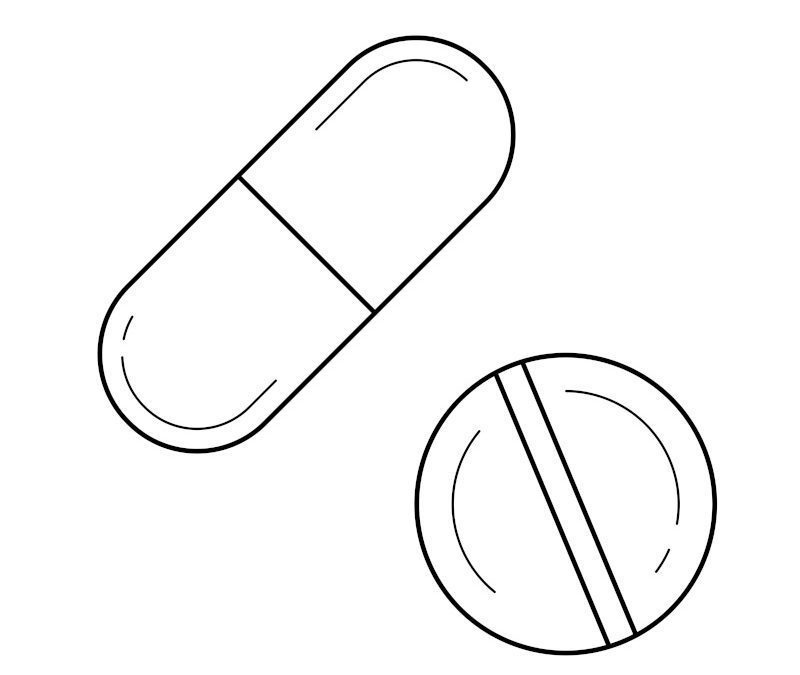Pain management can be tricky business. If you have been in pain for a long time or if a recent accident or surgery is causing significant pain, your top priority is to make that pain stop. And that is perfectly understandable.
Prescription Options
After all, ongoing or severe pain (or both) can make it difficult to do most anything. It limits your physical activity. And it also hampers your ability to think clearly or to maintain a positive mental state. Finding a way to lessen or eliminate pain can significantly improve your quality of life.
Your doctor has a range of options when it comes to prescribing medication to address pain. Unfortunately, many of those options are highly addictive and have led to the ongoing opioid crisis in America. So your doctor is likely to take a cautious approach to managing your pain.
That cautious approach might lead your physician to write a tramadol prescription. While tramadol is generally considered safer than other pain medications, it is still an opioid. And that means a person who is taking the drug must exercise caution.
Let’s take a close look at tramadol—both its benefits and its dangers.
The Good News, Bad News Routine
As we have noted, the good news is that tramadol is, in most cases, safe and effective for use as a pain medication.
But safe use of the drug requires strict adherence to your doctor or pharmacist’s instructions. Even if you are 100 percent convinced you would never use tramadol in an unsafe way, it can be surprisingly easy to break that important promise to yourself.
That’s because tramadol—like other opioids—can make a person feel extremely good. Once you have felt that way while taking the drug, you may be eager to keep feeling that way. And you may be willing to go to great lengths to try to keep that feeling going. That pursuit of the positive feelings puts you on the path to a substance use disorder. That, of course, is the bad news.
Signs You Have Developed a Problem
What are these “great lengths” that people go to in order to keep taking tramadol and experiencing good feelings? A person who is desperate to maintain their supply of the drug may do any (or all) of the following:
Find multiple sources: Whether they go “doctor shopping” (that is, make multiple appointments with different doctors), forge prescriptions, seek out an illegal source of the drug, or simply steal it from other users, a person who is attempting to build or maintain a stash of tramadol is well on their way toward trouble.
Take too much: Even though a person probably knows better, some users will start taking more than the recommended dose of tramadol (or take the recommended dose more often) under the dubious theory that if X amount makes them feel good, X+Y amount will make them feel even better.
Mix and match: Speaking of dubious theories, some users may wonder if they can increase the intensity of their positive feelings by mixing tramadol with other drugs or alcohol. This experimentation can be particularly dangerous—leading to potential overdoses and other serious issues.
Meanwhile, You’ll Always Be Losing Ground to Tramadol
Remember, the reason a person might try any of the above behaviors is that they want to ensure that tramadol will keep giving them good feelings.
But here’s the thing: it won’t.
Instead, abuse of tramadol comes with a whole slew of negative side effects. Those side effects may include:
- Headaches, dizziness, drowsiness, slurred speech, and/or pupils reduced to pinpricks
- Reductions in coordination, sweating for no clear reason, and/or significant muscle aches
- Nausea/vomiting and/or constipation—often accompanied by changes in appetite
- A marked increase in the symptoms of depression
- In some extreme cases: seizures, depression of the central nervous system, and/or the development of serotonin syndrome—all of which can lead to death.
Giving Up Tramadol: Good. Quitting Cold Turkey: Bad
We tend to admire people who seem to overcome challenges through the sheer force of their own willpower. And because we admire such people, we sometimes try to be that kind of person—even when it is not at all safe to do so.
When it comes to tramadol, simply deciding to quit “cold turkey” is unlikely to succeed. In fact, it can be extremely dangerous. That’s because withdrawal from tramadol can lead to some serious side effects. They may include:
- Seizures
- Dangerous increases in your heart rate and/or blood pressure
- Agitation, panic attacks, paranoia, delirium, psychosis, and/or hallucinations
Even the more mild symptoms of withdrawal can make it difficult to give up tramadol. Those symptoms may include:
- Increased irritability
- A persistent runny nose
- Loss of appetite
- Abdominal cramps and/or diarrhea
- Difficulty falling asleep
- Restless leg syndrome
The best way to lessen the severity of withdrawal symptoms is to taper off of tramadol in a medically supervised environment—like an inpatient facility devoted to helping people overcome their dependence on drugs and move forward with their lives
We Are Here to Help
French Creek Recovery Center is a fully accredited residential treatment center. That means we provide medically supervised detoxification as well as a period of rehabilitation involving both individual and group therapy. We can help you learn and develop strategies for putting drug use behind you for the long term.
We can also address any co-occurring mental health disorders that may be contributing to—or may have been worsened by—your substance use. All of us at French Creek Recovery Center are devoted to helping you build a firm foundation that will serve you well on your recovery journey.

